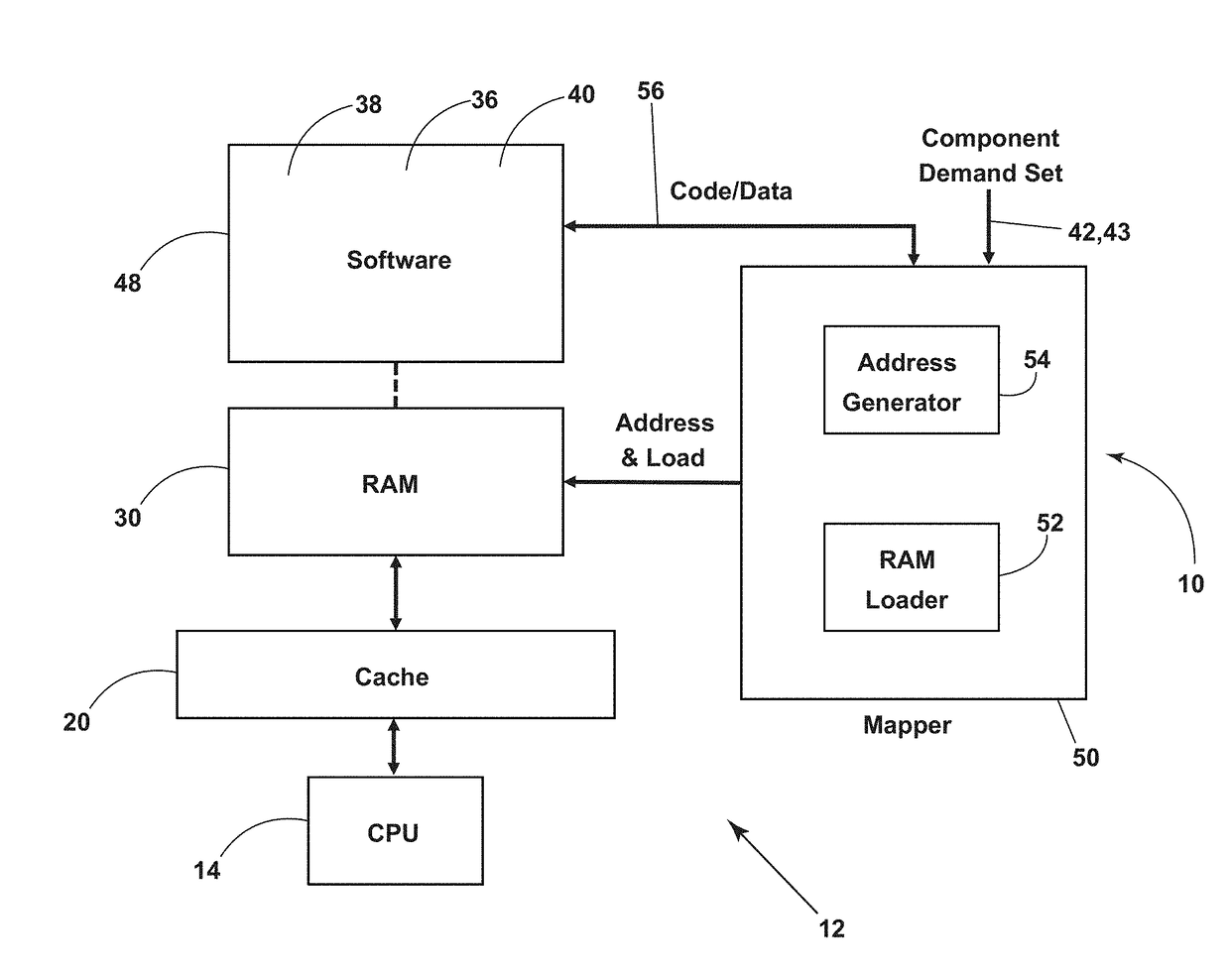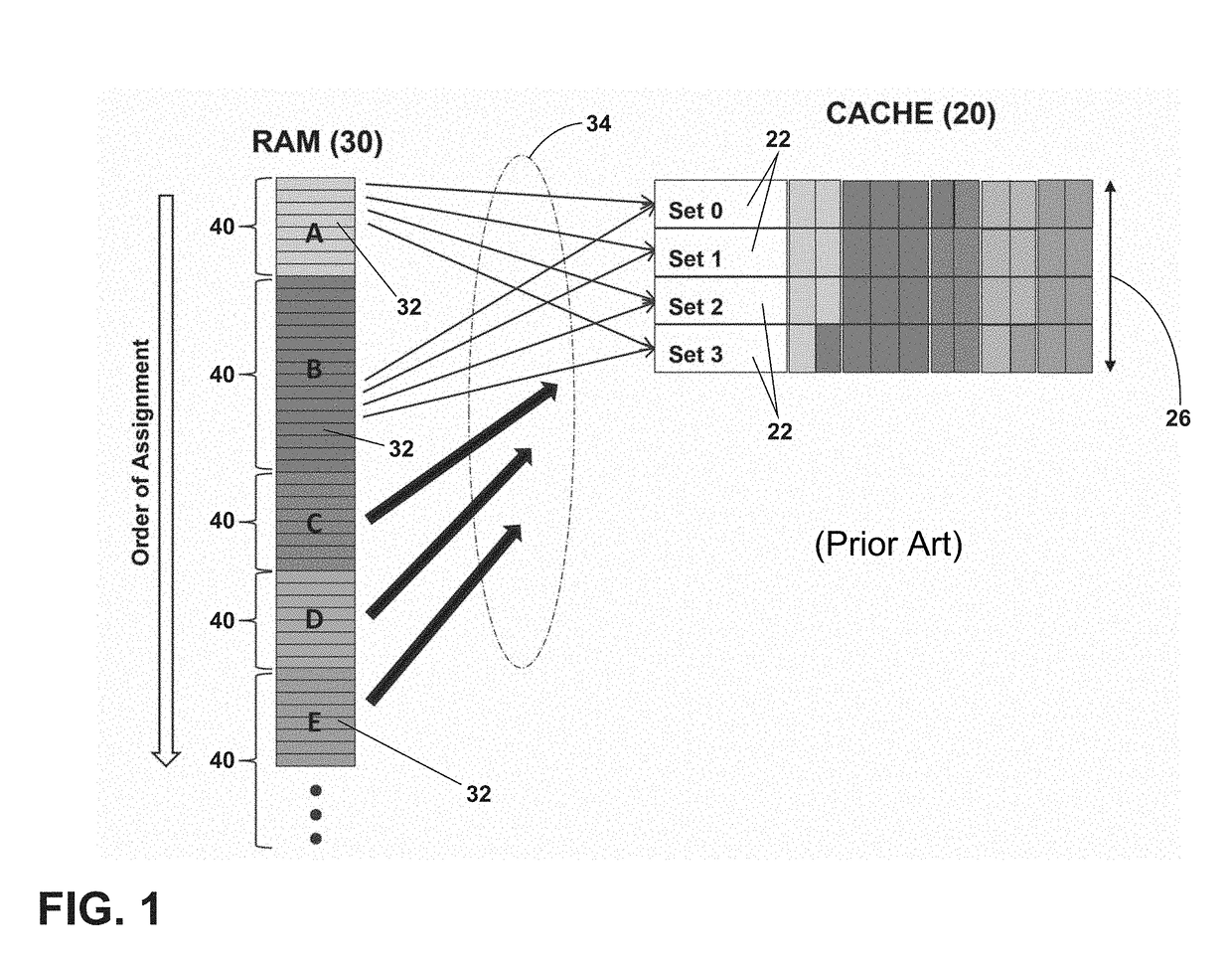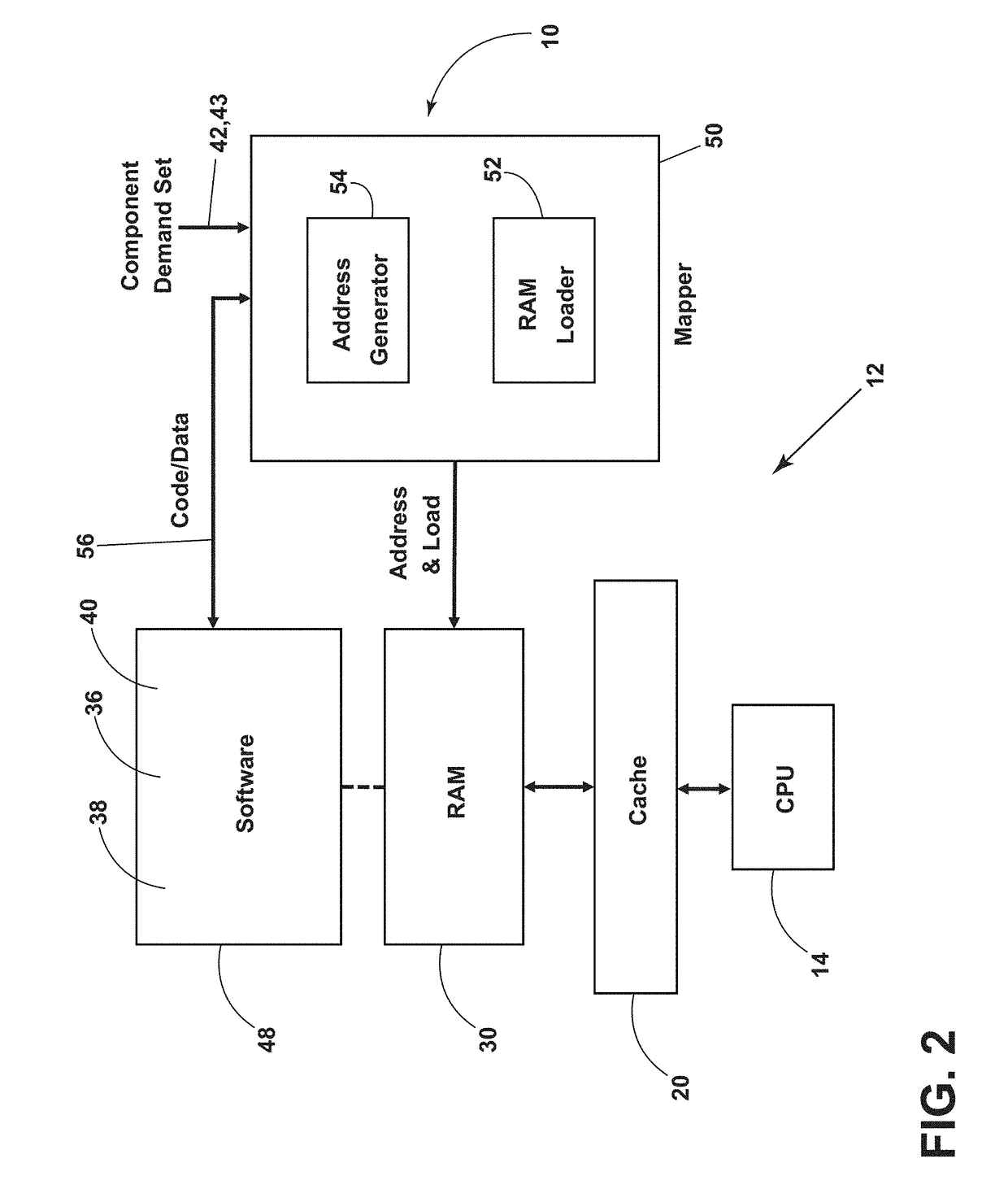Method of partitioning a set-associative cache in a computing platform
a computing platform and cache technology, applied in the field of computing platform set-associative cache partitioning, can solve the problems of prohibitively expensive hardware solutions, unpredictable performance of software components, and large contentions
- Summary
- Abstract
- Description
- Claims
- Application Information
AI Technical Summary
Benefits of technology
Problems solved by technology
Method used
Image
Examples
first embodiment
[0017]Referring now to FIGS. 2-4, in the present disclosure, a method 10 of partitioning a set-associative cache is described. A computer platform 12 (FIG. 2) may include a component storage device 48 holding a plurality of software components 40 to be loaded into a RAM 30 by a mapper 50 executing partitioning method 10. Cache 20 may be an L1 cache embedded with CPU 14 or may be an L2 cache outboard of CPU 14. In addition, cache 20 may be an L3 cache and which may be shared by two or more CPU cores. Other layers (L) of cache may be utilized. The purpose of partitioning method 10 may be to form a template for mapping software components or groups of components to dedicated sets 28 (FIG. 4) of the set-associative cache 20. In addition, the purpose of partitioning method 10 may be to load a plurality of software components or groups of components into RAM 30 such that cache 20 is spatially partitioned for software components needing deterministic performance. Although the following des...
second embodiment
[0026]Referring to FIGS. 5 and 6, method 10 of partitioning a set-associative cache for a plurality of software components to be loaded into RAM may comprise reserving a set in the set-associative cache for a software component not within the plurality of the software components. Like the algorithm of FIG. 3, a cache height 26 may be calculated from the hardware specifications of computing platform 12 (step 201). In addition to identifying the software components 30, step 202 may distinguish booted components 36 from future components 38 (FIG. 6), where one or more software components may be loaded into RAM after computer platform 12 is operating and where partitioning method 10 maps future components 38 to reserve sets of cache 72. Next, step 203 may determine a component demand set 42 for the booted components 36 and may include determining a reserve demand set 43 (FIG. 2) for future components 38, where the RAM blocks 32 corresponding to future components 38 are not loaded by RAM...
third embodiment
[0028]Referring now to FIG. 7, partitioning method 10 may comprise mapping the code / data 56 of various software components 40 to L1 caches 60 and L2 cache 62. Components 40 are shown in relative size of code / data and may include tasks (T), processes (P), operating systems (OS), and cores. The dimensions of caches L1 and L2 may represent the number of sets 22 available in each cache 20. In this example, a component fraction (tabulated in percentages) may be determined for tasks 1-16 and mapped proportionally to the three caches 20. Note that T1, T8, T15, and T16 may each be given a dedicated set 28, while two groups of components (T2-T7 and T9-T14) may collectively share a dedicated set 28. In this example, a software component 40 may be mapped to two caches (although a RAM is not shown in this figure). However, a cache may not be mapped to two RAM blocks because CPU 14 may not then know which RAM to go to for source code / data. The method 10 of cache partitioning may be the same for ...
PUM
 Login to View More
Login to View More Abstract
Description
Claims
Application Information
 Login to View More
Login to View More - R&D
- Intellectual Property
- Life Sciences
- Materials
- Tech Scout
- Unparalleled Data Quality
- Higher Quality Content
- 60% Fewer Hallucinations
Browse by: Latest US Patents, China's latest patents, Technical Efficacy Thesaurus, Application Domain, Technology Topic, Popular Technical Reports.
© 2025 PatSnap. All rights reserved.Legal|Privacy policy|Modern Slavery Act Transparency Statement|Sitemap|About US| Contact US: help@patsnap.com



